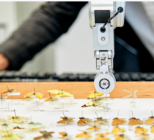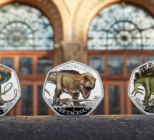The Natural History Museum, alongside the University of Reading, has revealed plans to develop a major new base for natural sciences research and international collaboration.
The planned centre, still subject to planning permission, will be created at the Thames Valley Science Park (TVSP), which is owned and managed by the University, within Wokingham Borough.
It is planned that the new centre will house the Natural History Museum’s mammal collections, non-insect invertebrates, molecular collections, and ocean bottom sediments, totalling more than 27 million specimens, as well as more than 5,500 metres of accompanying Library and archive material.
The Museum said this equates to around a third of its collection of more than 80 million objects, making the relocation its largest collections move since the 1880s.
Once opened, the centre – spanning the size of approximately three football pitches and expected in 2026, is hoped to widen access to the collections for the Museum’s 350 scientists, their collaborators, and researchers worldwide through rapid digitisation and science facilities.
The development will see collections currently at risk of deterioration and irreparable damage moved from “unsuitable buildings” to facilities which meet international collection standards.
Multi-million investment
The new centre is backed by investment from the Department for Digital, Culture, Media & Sport as part of a UK Government-wide priority to increase investment in R&D. While an exact figure has not been revealed, Arts Minister Lord Parkinson said the government is investing ” tens of millions” into the project.
Director of the Natural History Museum Doug Gurr said: “The University of Reading has a world-class reputation for teaching and research and there is enormous scope for collaboration on shared areas of scientific specialisms from climate science to agriculture and forestry, biodiversity loss and emerging diseases.
“We look forward to joining the lively community of ambitious, knowledge-based organisations at Thames Valley Science Park and forging closer relationships with institutions already based there – and of course reuniting with the British Museum through its Archaeological Research Collection.”
The museum said its digitsiation project, which earlier this year reached 5 million specimens, will see a “much-needed acceleration and enhancement” by the new centre.
Vice-Chancellor of the University of Reading Professor Robert Van de Noort said the base “could provide significant opportunities for our academics and students, as well as bringing benefits to the broader local area.
“The University already has a working relationship with the British Museum, which also has a facility located at the Thames Valley Science Park, as well as several other national and international organisations. This new relationship with the Natural History Museum should further enhance the international research success of both organisations.”










